In this quest for knowledge, electrons are some of the most amazing particles of all. Their behavior can be so incredibly mysterious yet so incredibly fundamental for us to understand higher level physics and electricity. As a result, there is a natural curiosity about whether a wire can carry a current and still remain neutral – a complex question that requires an Epic Guide to unravel. In this article, we will answer these questions and provide useful tips to help you understand how electrons work and how they affect electricity.
What is Electrical Current
In a direct current, the flow of charge remains constant in one direction, while an alternating current reverses its direction periodically. AC is more commonly used in everyday electronics, as it allows for variations in voltage to adjust the output power of devices such as light bulbs and motors. DC is often used in batteries; when the battery runs out of energy, so does its DC current.
Electric current consists of free-flowing electrons, which are negatively charged particles that are part of the electrical system. The flow of electrons is enabled by conductors, such as wires, which are materials that allow electrons to move freely through them.
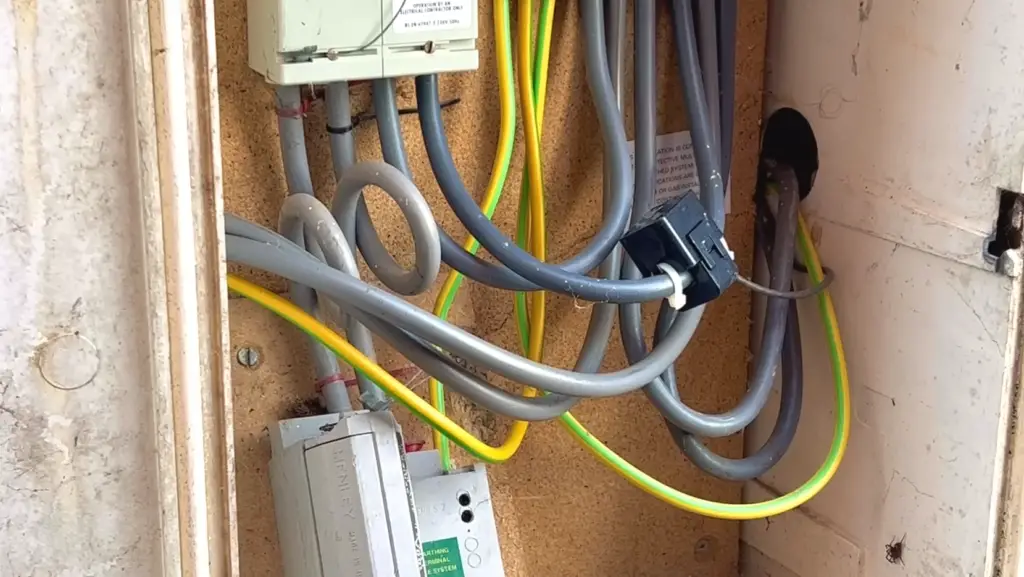
When electricity flows through a circuit, it creates energy. This energy can be used to power lights, appliances and other electronic devices. In order for this to happen, an electric current must exist in the circuit so that the electrons can flow from one point to another.
Another important concept in electronics is voltage, and some people have trouble distinguishing between it and current. As we just mentioned, current is defined as the rate of flow of electric charge through a conductor, while voltage is a measure of the energy per unit charge between two points in an electric field.
Although current and voltage are closely related, they are not one and the same. To understand their differences more clearly, let’s consider an analogy: water flowing through a pipe. The volume (or amount) of water that flows past any point per second is analogous to current; this quantity is measured in liters/second or gallons/minute. The pressure pushing on the water is analogous to voltage; it’s measured in pounds/square inch or kilopascals.
In a circuit, current is analogous to the amount of water flowing through the pipe while voltage is analogous to the pressure pushing on it. Voltage can be thought of as “electrical pressure” and current as “electrical flow”. Current always flows from higher voltage to lower voltage (just like water flows downhill) and thus, it is said to obey Ohm’s Law. That law states that the current in a circuit is proportional to the voltage across it, provided that no other parameters (such as resistance) change. [1]
Definition of a Neutral Wire
They do not carry any voltage above ground level and can provide a safe point of connection between different loads connected to a circuit. The neutral wire is necessary for the proper functioning of many electrical devices, including lights and other appliances. It also helps protect people from electric shocks by providing a way for excess electricity to safely exit the system without causing injury or damage. Without a neutral wire, there would be no way to safely discharge excessive energy from electrical systems.
The neutral wire is the main conductor of an electrical system and serves as the return path for current flowing through a circuit back to the power source. Its importance lies in its ability to maintain a safe connection between different loads on the same circuit, allowing them to share power without overloading any one component. Additionally, it helps prevent shock hazards by providing a path for electricity to safely escape from circuits if there is an overload or short circuit. Without a neutral wire, these issues could cause serious injury or damages.
It’s important to note that while neutrals usually carry no voltage above ground level, they may be energized at times due to various factors such as normal load imbalances or inadvertent contact with a hot conductor. This is why it’s important to ensure that all electrical wiring installations are done properly and that all terminals are properly insulated before any work is carried out. A qualified electrician should always be consulted if any doubts or questions about the safety of an electrical system arise.
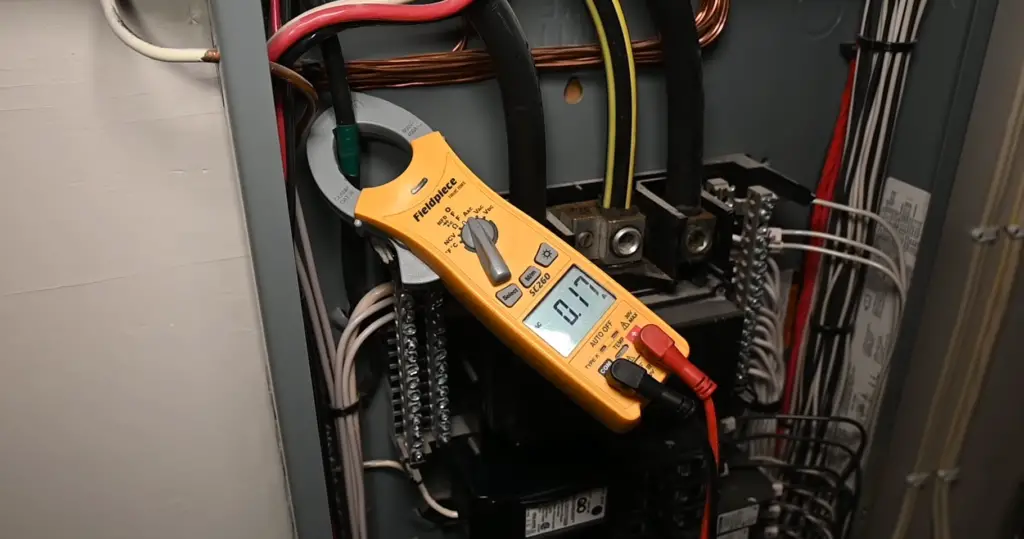
Therefore, it’s important to remember that while the neutral wire typically carries no voltage under normal conditions, it can carry a small amount of electricity when appliances are turned on or off. It is also essential to note that the neutral wire must be connected properly and safely to avoid any potential hazards. [2], [3]
Can a Wire Carry a Current and Still Be Neutral
Yes, a wire can carry an electrical current and still be neutral. Neutral wires are used in circuits to provide a return path for the current after it has performed its task of powering something. The neutral wire is connected to ground and acts as a backup connection in case of potential faults.
In many systems, such as residential wiring, the neutral wire carries no electrical current at all when no devices are powered on. It does however act as a conductive path for electricity to flow through when one or more devices are turned on in the circuit.
In order to ensure that the voltage along the length of the wire remains consistent, it is necessary to have a reference point called “ground” which acts as the zero-voltage state for all other points in the circuit. In residential wiring systems, this means connecting the neutral wire directly to ground via a grounding conductor. [2], [3]
Does Neutral Wire Carry Current in Single Phase?
Yes, the neutral wire in a single phase system carries current. It is an important part of the circuit and must be used properly to ensure electrical safety.
The neutral wire in a single-phase system is connected directly to the ground or neutral busbar in the main service panel. From there it branches off to each outlet and other points of use throughout the house. The neutral wire provides a return path for current that starts at one device and flows back through another on its way back to the source of power. Without this continuous loop, electricity would not flow correctly and could potentially cause damage or injury. [3]
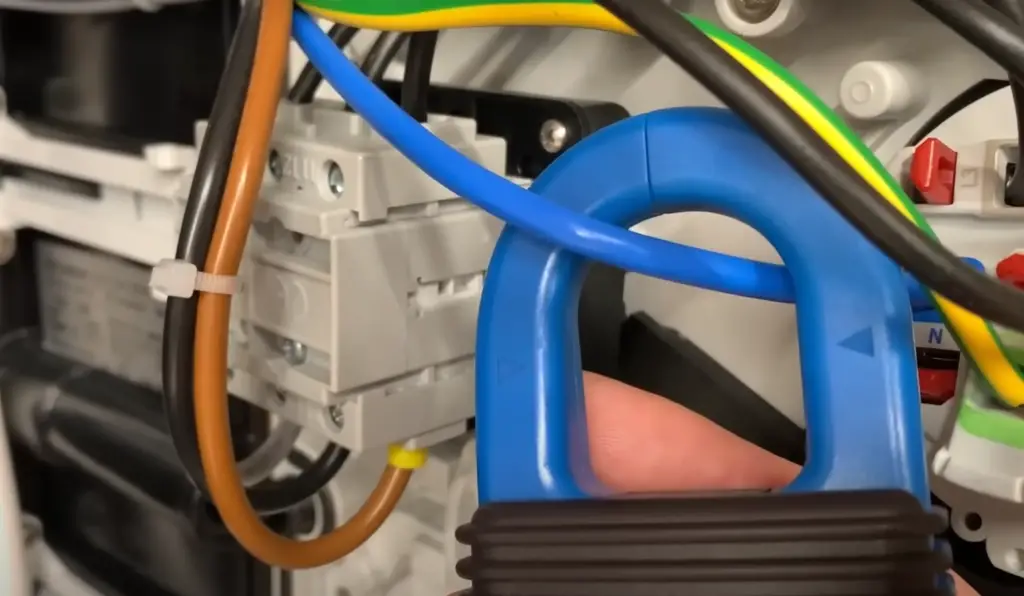
Does a Neutral Wire Carry Voltage
No, a neutral wire does not carry voltage. Neutral wires are essentially grounded and are used to return current back to the power source after it has been used by an electrical device. A neutral wire is typically white in color and carries no voltage above ground level, though it may be energized due to various factors such as normal load imbalances or inadvertent contact with a hot conductor.
Still, it’s important to remember that while the neutral wire typically carries no current under normal conditions, it can carry a small amount of electricity when not grounded. This is why it’s important to ensure that all electrical wiring installations are done properly and that all terminals are properly insulated before any work is carried out. A qualified electrician should always be consulted if any doubts or questions about the safety of an electrical system arise. [3]
Safety Tips for Working with Neutral Wires
While neutral wires aren’t as dangerous as live wires, they can still pose potential safety risks if not handled correctly. To reduce the chances of injury or damage, here are some important safety tips to keep in mind when working with neutral wires!
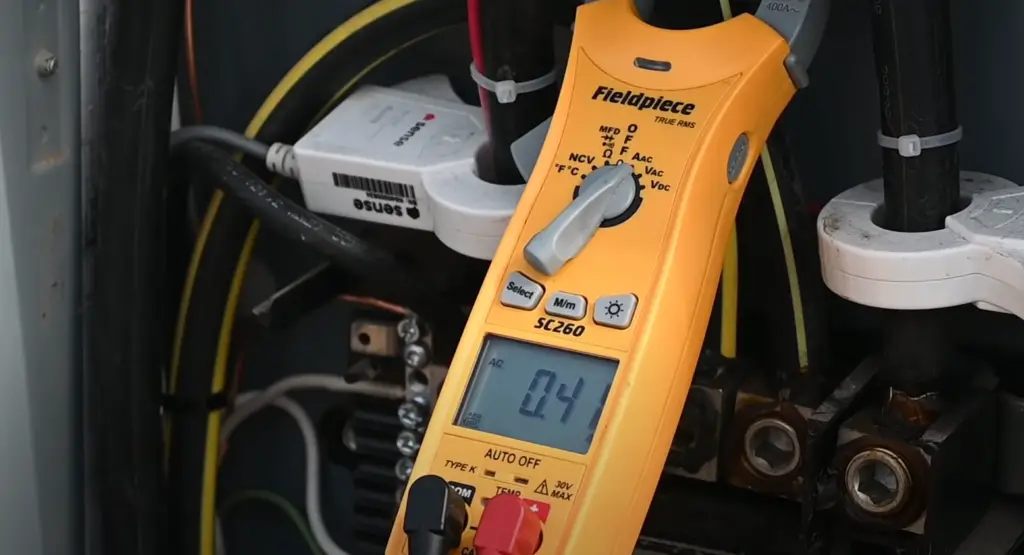
Shut off the power completely prior to starting the job
The most important safety measure to take when working with any kind of electrical wiring is to shut off the power source completely. This means turning off the main switch and unplugging any appliances or other equipment that are connected to the circuit. Doing this will ensure that no live current is present while you’re working on the wiring, minimizing any potential risks of electric shock or damage to your home.
Check for signs of fraying
Another key safety tip when dealing with neutral wires is to check for signs of fraying before starting work. Wires can become damaged over time due to excessive wear and tear, and if these are not discovered and addressed, they could cause electric shocks or start fires if left unchecked. Inspect all wires thoroughly for any signs of fraying or other damage before starting work, and replace them if necessary.
Use appropriate tools and safety equipment
It’s also important to use appropriate tools and safety equipment when working with electrical wiring and neutral wires specifically. Insulated gloves should always be worn when handling live wires and a voltage tester should be used to check the level of electrical current in wires prior to starting work. This will help protect you from any potential shock hazards while reducing the chances of injury or damage to your home. [4]

FAQ
Why is there 0 current in the neutral wire?
The total amount of current in both wires should be equal, so if there is any imbalance between them then it indicates that something somewhere is wrong.
The reason why there is usually 0 current in the neutral wire is because it has been designed this way by electrical engineers for safety reasons. By making sure that no current flows through the neutral wire, an open circuit or short circuit can be detected more easily as well as any other potential hazardous condition such as an overloaded circuit or even arcing from a damaged insulation.
Can a current carrying wire be neutral?
Yes, a current carrying wire can be neutral. In fact, this is the basis for power transmission and electricity distribution. The concept of neutrality in an electrical system relates to the fact that no point in the circuit will have any net charge (positive or negative) since all charges are balanced out.
To understand how this works, it’s important to consider what happens when an electric current passes through a conductor such as a wire. When a current passes through the wire, electrons move from one end to another in order to complete the circuit. Since there is an equal number of electrons on opposite sides of the wire, it remains electrically neutral – meaning it has no net charge overall.
The key factor in making sure that a wire remains neutral during the passage of current is having an adequate return path for electrons. This return path can be either another conductor (such as another wire), or back through the ground. Properly grounding or providing a secondary return path ensures that all electrons will eventually make their way back to whence they came, thus keeping the overall circuit electrically neutral and at zero volts.
Does neutral carry any voltage?
No, a neutral wire does not carry voltage. The purpose of the neutral wire is to provide a return path for the electric current from the hot wire to the ground or earth. It has no actual electricity running through it until there is an imbalance in the system. When this happens, currents flow back and forth between the hot and neutral wires allowing electricity to be distributed within your home or building.
Why is there no current in the neutral wire?
The neutral wire in a circuit carries the return current from an appliance or device to complete the circuit. The return current will only flow through the neutral wire if there is a difference in voltage between it and the hot wire. When both wires are at the same voltage, no current flows, so there is no current in the neutral wire.
When power is first applied to a circuit, it begins to build up a potential difference between its hot and neutral wires. This difference in potential creates an electromotive force (EMF), which causes electrons to flow from one wire to another until they reach equilibrium. At this point, any further increase in EMF would cause more electrons to move and create a current that would travel along the conducting material in the wire, which is why there is no current in the neutral wire.
It’s important to note that electricity will still flow through a neutral wire even if it doesn’t have a current running through it. This phenomenon is known as capacitive coupling and occurs due to the electric field between the two wires. The electrons on one wire will be attracted to those of the opposite polarity on the other and will move from one side to another without actually creating a current.
What would happen if the neutral wire accidentally connected to the current carrying wire?
If the neutral wire were to accidentally connect to the current carrying wire, then it would cause a short circuit. This is because electric current follows the path of least resistance and when two wires are connected together, they provide an easier path than any other route available. As such, all of the electricity in the circuit would flow through both wires simultaneously instead of traveling along its designed route. This can lead to increased temperature levels and potentially create fire hazards due to overheating of devices like light switches or outlets. Additionally, it may also damage any connected appliances by sending more power than they were designed to handle. It is important that professional electricians inspect all wiring before attempting repairs or replacement on any electrical system.
Useful Video: Does Current Flow on the Neutral?
Conclusion
Neutral wires can, indeed, carry a current and still remain neutral. The key is to remember that the electrons are flowing through the entire system and not just one wire in the circuit. As long as all of the components are electrically balanced—meaning they have an equal amount of positive charge on one side and negative charge on the other—the wire will stay neutral even if it has a current running through it.
While some components may need to be adjusted or replaced occasionally to ensure electrical balance, this is normal preventive maintenance for any electrical system. With proper care, your wires should remain neutral while safely carrying electricity from point A to point B. Thanks for reading our guide on whether a wire can carry a current and still be neutral. We hope you’ve learned something new about home electrical wiring today!
References
- https://www.diffen.com/difference/Current_vs_Voltage
- https://homework.study.com/explanation/can-a-wire-carry-a-current-and-still-be-neutral-that-is-have-a-total-charge-of-zero-explain.html
- https://www.circuitsgallery.com/can-a-wire-carry-a-current-and-still-be-neutral/
- https://centralcountyfire.org/tips/electrical-wiring-safety/





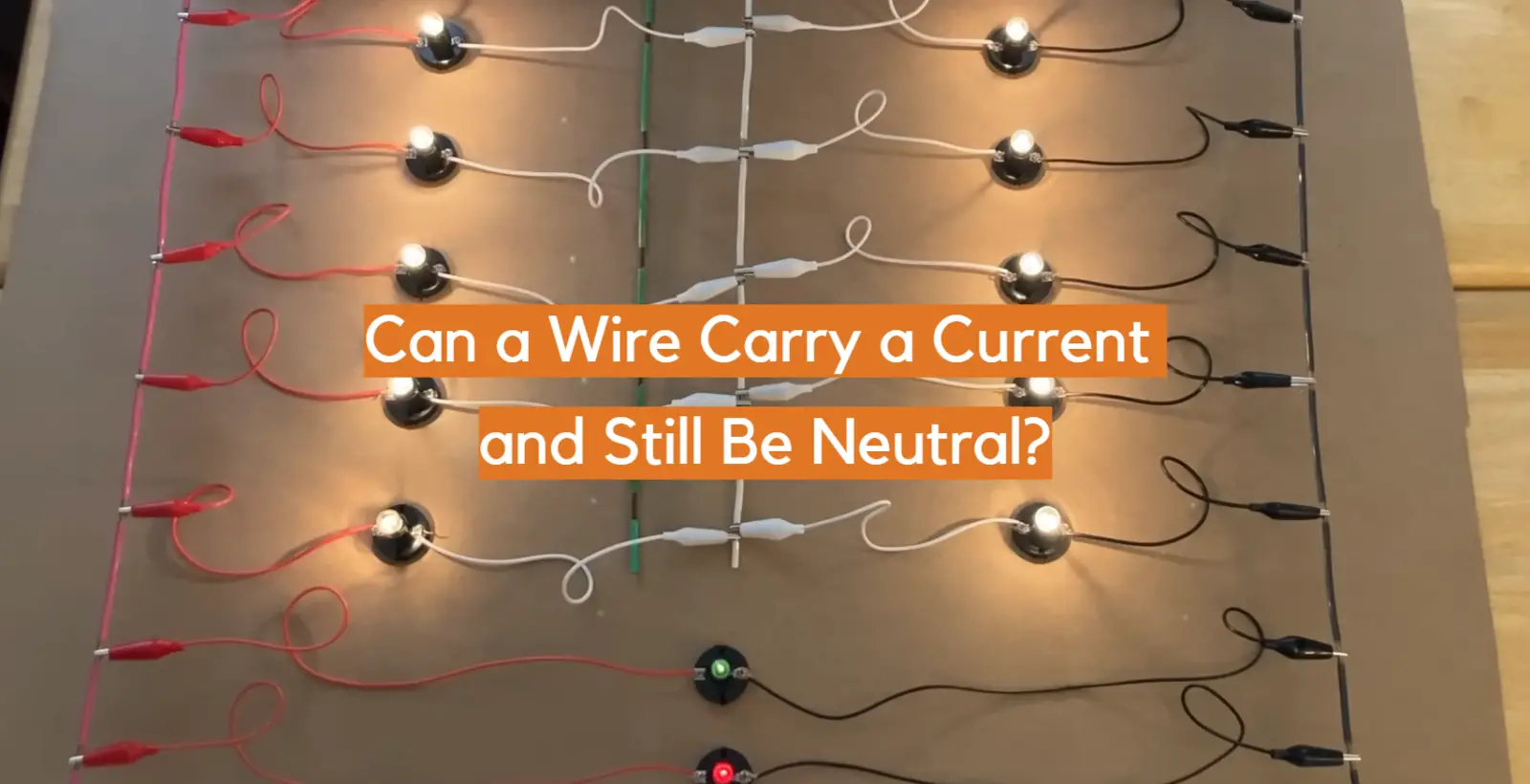








Leave a Reply